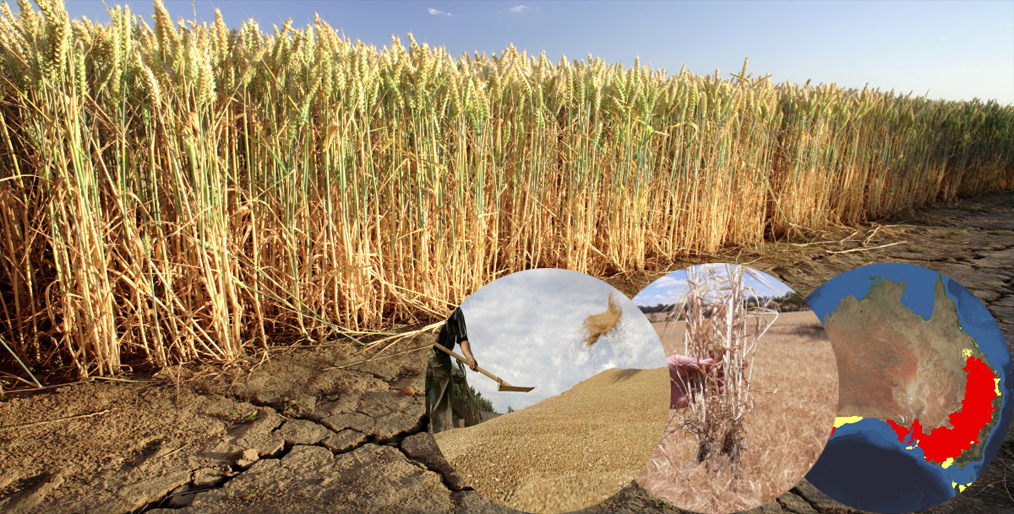
[caption id="attachment_2375" align="aligncenter" width="1014"] File Picture[/caption]
GFMM desk: The east coast of Australia will be flowing through hot, dry weather for at least another three months, the Meteorological Bureau of Australia said on September 26, 2019, a deadly forecast for struggling agriculture.
Australia’s largest and most lucrative rural crop, wheat, faces the biggest damage in the third consecutive year of drought, as the Bureau of Meteorology (BOM) said there was just a 25% chance for average rainfall between Sep. 30 and Dec. 1.
Besides being dry, the bureau said, the entire country would experience hotter-than-normal conditions, putting the chance of exceeding average temperatures during the next three months at 80%.
The forecast is a hammer blow to Australia’s rural sector after the chief commodity forecaster this month said the value of farm production would hit a four-year low of A$59 billion ($39.84 billion), leaving many rural producers struggling.
“They’re just selling their stock, trying to hang onto the bare minimum,” said Andrew Peadon, a livestock stockman from Trangie, 463 km (288 miles) northwest of Sydney.
“The pain here will last another four or five years after the drought, that’s for sure.”
On Sep. 10, Australia trimmed its wheat production forecast by nearly 10% as a result of the drought.
With lower production, Australia - typically one of the world’s largest exporters - is also likely to lose greater market share in lucrative markets such Indonesia and Korea at a time of falling prices.
Dwindling Australian production is one of the few areas of support for benchmark prices, which are lingering around a found-month low on abundant global supplies.
Lower wheat exports will also damage Australia’s stuttering economy.
In the year to June 2019, Australia’s ranking among top wheat suppliers dropped to No. 7, from its position as third-largest exporter in 2016/17, when production hit a record of 35.1 million tons.
Source: Reuters
SZK
File Picture[/caption]
GFMM desk: The east coast of Australia will be flowing through hot, dry weather for at least another three months, the Meteorological Bureau of Australia said on September 26, 2019, a deadly forecast for struggling agriculture.
Australia’s largest and most lucrative rural crop, wheat, faces the biggest damage in the third consecutive year of drought, as the Bureau of Meteorology (BOM) said there was just a 25% chance for average rainfall between Sep. 30 and Dec. 1.
Besides being dry, the bureau said, the entire country would experience hotter-than-normal conditions, putting the chance of exceeding average temperatures during the next three months at 80%.
The forecast is a hammer blow to Australia’s rural sector after the chief commodity forecaster this month said the value of farm production would hit a four-year low of A$59 billion ($39.84 billion), leaving many rural producers struggling.
“They’re just selling their stock, trying to hang onto the bare minimum,” said Andrew Peadon, a livestock stockman from Trangie, 463 km (288 miles) northwest of Sydney.
“The pain here will last another four or five years after the drought, that’s for sure.”
On Sep. 10, Australia trimmed its wheat production forecast by nearly 10% as a result of the drought.
With lower production, Australia - typically one of the world’s largest exporters - is also likely to lose greater market share in lucrative markets such Indonesia and Korea at a time of falling prices.
Dwindling Australian production is one of the few areas of support for benchmark prices, which are lingering around a found-month low on abundant global supplies.
Lower wheat exports will also damage Australia’s stuttering economy.
In the year to June 2019, Australia’s ranking among top wheat suppliers dropped to No. 7, from its position as third-largest exporter in 2016/17, when production hit a record of 35.1 million tons.
Source: Reuters
SZK
Comment Now